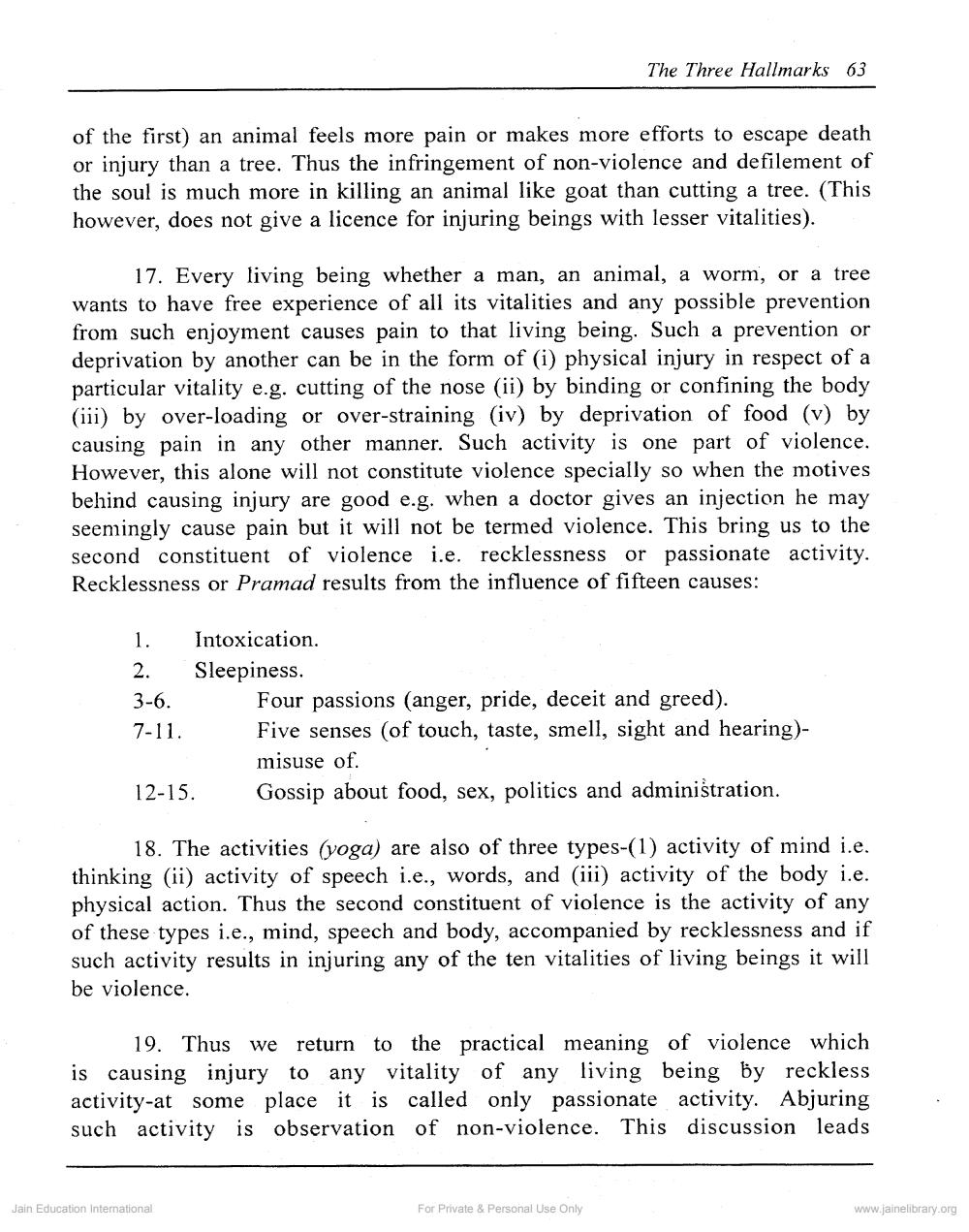________________
The Three Hallmarks 63
of the first) an animal feels more pain or makes more efforts to escape death or injury than a tree. Thus the infringement of non-violence and defilement of the soul is much more in killing an animal like goat than cutting a tree. (This however, does not give a licence for injuring beings with lesser vitalities).
17. Every living being whether a man, an animal, a worm, or a tree wants to have free experience of all its vitalities and any possible prevention from such enjoyment causes pain to that living being. Such a prevention or deprivation by another can be in the form of (i) physical injury in respect of a particular vitality e.g. cutting of the nose (ii) by binding or confining the body (iii) by over-loading or over-straining (iv) by deprivation of food (v) by causing pain in any other manner. Such activity is one part of violence. However, this alone will not constitute violence specially so when the motives behind causing injury are good e.g. when a doctor gives an injection he may seemingly cause pain but it will not be termed violence. This bring us to the second constituent of violence i.e. recklessness or passionate activity. Recklessness or Pramad results from the influence of fifteen causes:
3-6.
1. Intoxication. 2. Sleepiness.
Four passions (anger, pride, deceit and greed). 7-11. Five senses (of touch, taste, smell, sight and hearing)
misuse of 12-15. Gossip about food, sex, politics and administration.
18. The activities (yoga) are also of three types-(1) activity of mind i.e. thinking (ii) activity of speech i.e., words, and (iii) activity of the body i.e. physical action. Thus the second constituent of violence is the activity of any of these types i.e., mind, speech and body, accompanied by recklessness and if such activity results in injuring any of the ten vitalities of living beings it will be violence.
19. Thus we return to the practical meaning of violence which is causing injury to any vitality of any living being by reckless activity-at some place it is called only passionate activity. Abjuring such activity is observation of non-violence. This discussion leads
Jain Education International
For Private & Personal Use Only
www.jainelibrary.org




